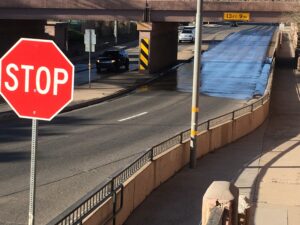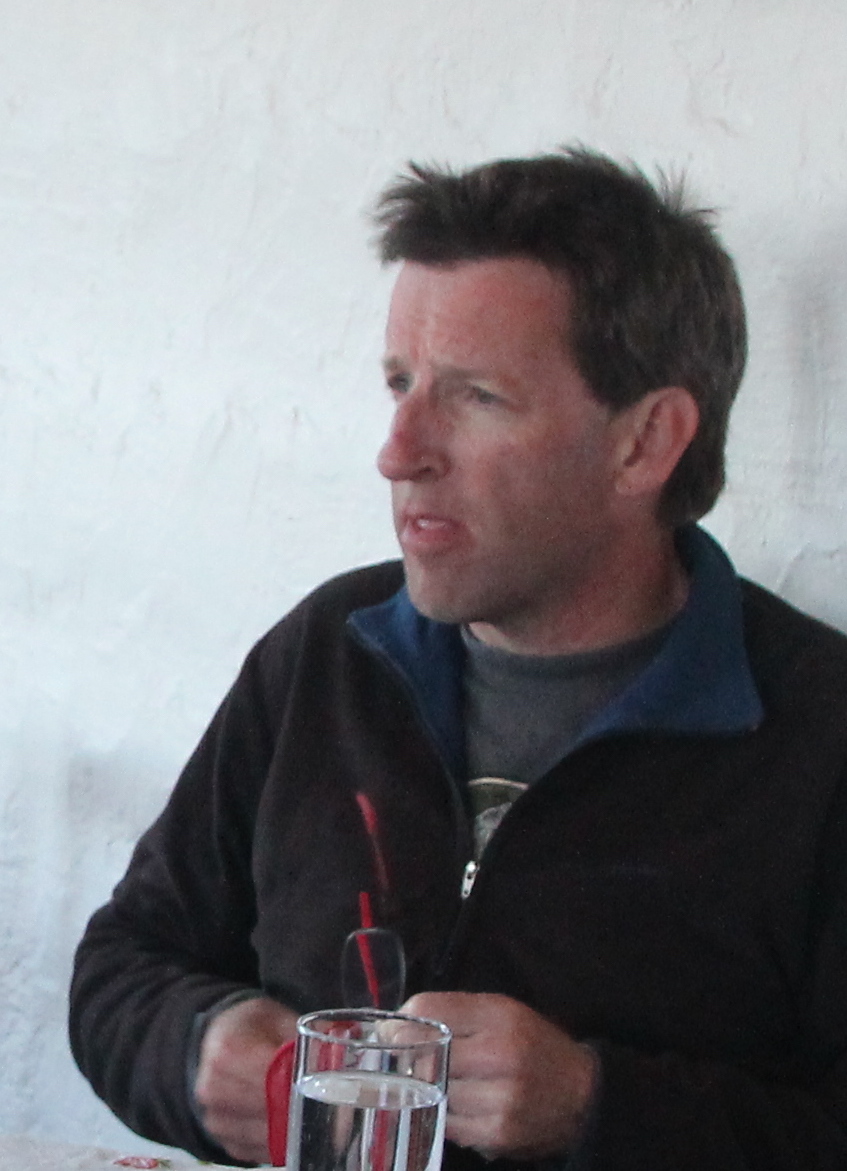The evening grosbeaks have been peeping and cheeping pretty much every morning in April, snacking on elm buds and drinking from the creek that’s been running alongside the tracks since the deep freeze of winter left us. The grosbeaks aren’t unusual, as they show up every spring, but the creek is. Old Town Spring often leaks and trickles a bit as the snow is melting, its slight flow coursing through the rocky channel people constructed for it long ago, then pooling in perennial mud just this side of the railroad tracks. But this year, after a winter of heavy snow, the flow formed a full-fledged creek that would, if it could, run all the way down to the Rio de Flag, which this spring has also been living up to its name in lively fashion.
I’ve been a neighborhood water geek since I was one of those little four-year-olds stomping along in ill-fitting gumboots, sliding through mud in the woodlot or splashing through sidewalk puddles after a rainstorm. Unlike some, I guess, I’ve just never grown out of that phase. And so a few weeks ago you could have found me out on the curb, trying to collapse the tunnels that had formed where runoff from Observatory Mesa was streaking down the gutters after it had eroded passageways through the big icy piles of snow that still lined the street. Stomp, stomp, collapse, and then there was nothing more satisfying than watching the runoff swiftly saturate the snow, turn it into slush, and bear it away. When you read a lot about glaciers melting but have just been through a colder and snowier winter than usual there’s a deeply atavistic pleasure to be found in hastening the melt, as if my piddling puddling were a way to speed up the warm temperatures we had all come to crave.
Flagstaff experienced almost 14 feet of snow this winter, the result of some of the same atmospheric rivers that slammed California, and a good deal over both the long-term average (around eight feet) and the projections of climate models (less snow generally). This fact lent the winter an elegiac quality, at least to those who believe the projections. The moisture swelled streams and aquifers and reduced fire danger—but what if it was the last such winter for a long while, or maybe ever? Climate change alters the world’s physics, sure, but no less our psychology, robbing us of a sense of constancy. It’s a sentiment I often hear from neighbors, many of whom seem certain that each coming year can only be worse than the one before.
This sense of surprise lent a strange dissonance to our Arizona experience of a bracingly wet winter (even as the eastern half of the country experienced record warmth and lack of snow). For me, what most fed that sensation was seeing the local springs flow as they had not done for many years. It is said that Old Town Spring was reliable enough, in the pioneer era, that the railroad builders deliberately aimed their tracks at it as a source of water for the steam engines. According to John Vankat’s splendid new book of historical re-photography, The San Francisco Peaks and Flagstaff Through the Lens of Time, during Flagstaff’s early days water consistently formed one or more ponds right where the water from Old Town Spring has been going, just a little west of the Milton Road underpass.
Now that buildings and parking lots are there, the city can’t afford a pond anymore, and the creek disappears into a storm drain behind a city warehouse. From there, near as I can tell, it runs unseen under the underpass, then is pumped back up into the nearby Rio channel.
This year, the spring’s insistence overwhelmed that engineered system. Shortly after the Big Thaw began, water began backing up into Milton Road’s northbound lanes—two inches, four inches, six, eight inches, more at times. This of course was unacceptable, so soon big ADOT pump trucks began showing up and sucking the water out. After a few days of this the northbound lanes were dry.
But the insistent little creek still insisted. On my daily walk to work I began to notice little rills of water showing up in the seams of the concrete on the road’s other, uphill side. It wasn’t stagnant, but bubbled up as if coming from a deficient drinking fountain. It was slow. A determined four-year-old in gumboots could have dammed it with a few buckets’ worth of beach sand. But only for a while, for if the water was slow it was apparently unstoppable too; it kept coming.
The seepage prompted more ADOT trucks, more pumping. It was a whole ‘nother spring: here was the abundant water that had soaked into the ground somewhere up on the mesa, then taken its old but not forgotten path through fractured basalt until it emerged from the same hillside fissure that has been there a long, long time; and then when it was in turn forced underground by human engineering it again exerted its memory of what water does, namely use the force of gravity to find the smallest cracks and seams and run up into them. And so each day when I’ve walked the underpass I’ve given a small silent cheer for the insistence of water and how it pushes up into our plans.
In our climate-changed world the arrow of history can seem to fly in only one direction, toward more and more ill-considered human meddling with the earth systems that sustain us. So every once in a while it’s welcome balm to see, and hear, the opposite: the snowpack rising, the creek running, the bird flocks bigger than in other springs. Our spirits, it turns out, can use recharging as much as the aquifers can.


